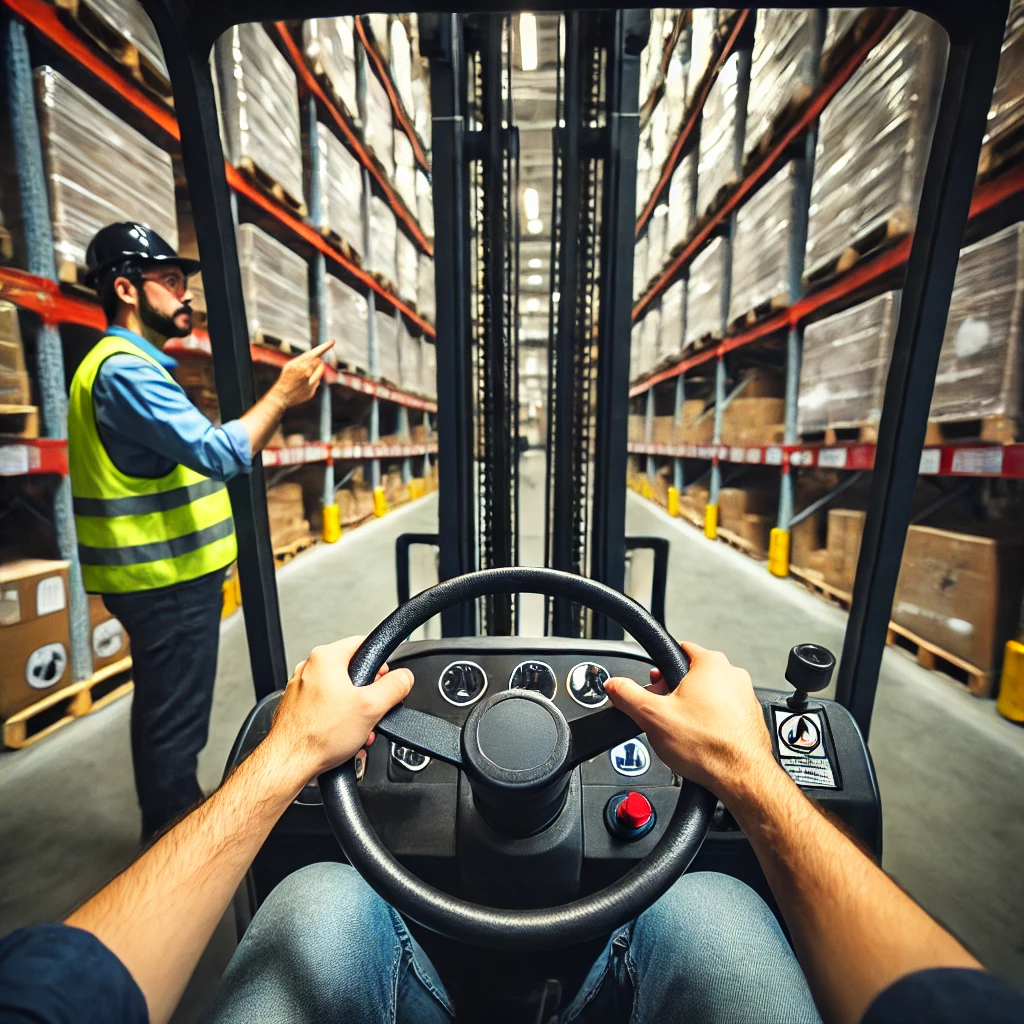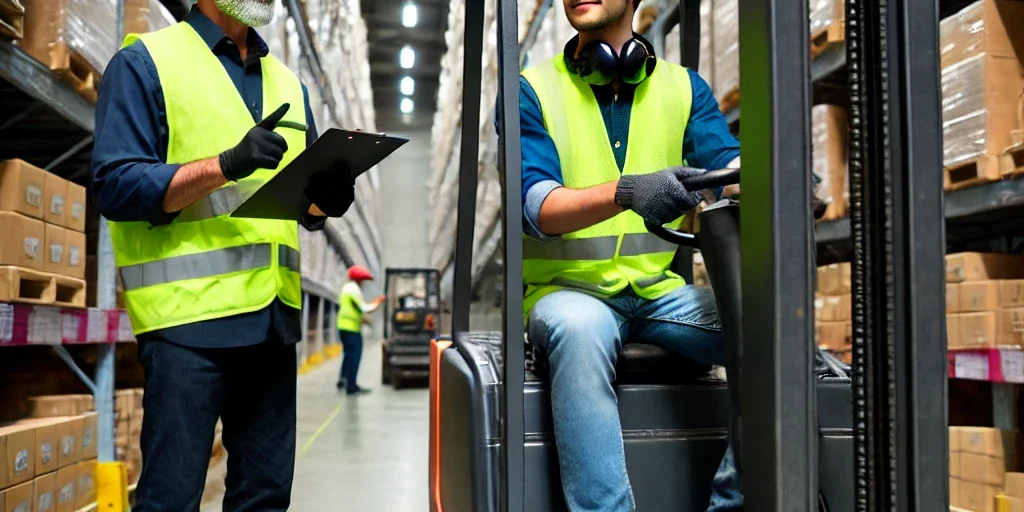Driving a forklift is an activity that requires a lot of attention and concentration. This is because they are machines with considerable power and weight, often used in confined spaces with other workers. So, when you get into a forklift, it is essential to proceed with extreme caution. You need to have the necessary skills to operate the vehicle without exposing yourself or others to avoidable risks. Here are our tips on how to drive a forklift safely.
Requirements for Driving a Forklift
Before we reveal our tips and tricks on how to drive a forklift professionally, we need to clarify a prerequisite. Only operators with a valid certificate, also called a “patentino”, can operate a forklift. The employer is responsible for ensuring that the forklift operator is adequately trained and competent in the safe use of the forklift. This is in accordance with Article 38 of Legislative Decree 626/94. To obtain certification for operating forklifts, you must attend a training course. The certification is valid for five years.
During their duties, the forklift operator must move goods and oversee the loading and unloading phases. They must inform the employer about any problems or difficulties encountered during operation, such as situations related to the route or the condition of the forklift itself.
How to Drive a Forklift: Practicing
The logistics sector is advanced in Italy, and many companies rent forklifts to ensure continuity of their operations. Therefore, the job of a forklift operator is in high demand, especially in companies that manage goods movement. These companies are constantly looking for qualified operators to manage forklifts.
But how do I learn how to drive a forklift?
This question arises naturally for anyone approaching this job for the first time. Driving this machine is neither easy nor difficult; it has some distinctive technical features. These include the asymmetrically distributed weight, sometimes non-intuitive controls, and steering via the rear wheels, which you get used to only with a lot of practice.
Each operator must become familiar with the exact model of the forklift they will operate. They must also develop a thorough knowledge of the routes within the warehouse or the different work zones assigned. The first step is to get familiar with the controls by moving levers and pedals in a safe area to learn the machine’s reactions. For practice, having some empty or lightly loaded pallets is enough, but any object will do.
Basic Manoeuvres
Pick up a pallet, lower the forks, reposition the pallet at a higher level, retract the forks, lower them, and so on. Next, you should practice reversing, simulating all the actions you will face daily at work, and precisely evaluating the sensitivity of the pedals.

How to Drive a Forklift: Preliminary Machine Checks
Before starting to drive the forklift, it is good practice to check the machine’s components like the battery or fuel, water, antifreeze, and oil levels (for diesel models). Afterwards, it is crucial to carefully examine the wheels, paying particular attention to any objects trapped and the tire pressure. Finally, it is vital to ensure that the hydraulic system functions regularly without leaks and that the forklift’s shifting is smooth as expected.
Any faults, damage, or deformations must be reported immediately to the employer or supervisor, always prioritizing personal safety and that of others. Once inside the cab, you must wear all provided personal protective equipment (helmet, gloves, shoes, safety glasses) and fasten the seatbelt.
Useful Tips for Safe Forklift Operation
The primary task of the forklift operator is to acquire a deep familiarity with the vehicle they will drive. And be prepared to execute every manoeuvre. This involves accurate knowledge of the forklift’s maximum capacity. To avoid overload situations that could trigger its tipping.
So, you need to pay attention to the size and shape of the object to be lifted. Ensuring that the forks are of the right width for the type of pallet in use. Lifting the object should only be done to the height necessary for movement. Avoiding excesses, which will improve the vehicle’s balance. However, it is essential to position the load towards the end of the forks. Rather than pushing it forward to ensure the stability of the load itself.
Finally, it is important to carefully inspect the surrounding work environment. To verify the presence of obstacles and people nearby while performing operations.
Conclusion
Driving a forklift is an activity that requires a significant amount of attention, competence, and responsibility. The technical peculiarities of these vehicles, such as balancing the load and managing the forks, require in-depth knowledge from the forklift operator. It is essential to follow preliminary inspection procedures and ensure that the vehicle is in optimal condition before starting any operation. Proper training and knowledge of the forklift’s characteristics are crucial for preventing accidents and ensuring the safety of everyone working nearby. A competent forklift operator must be aware of the vehicle’s capabilities and limitations, adopting correct practices for lifting and moving goods.






